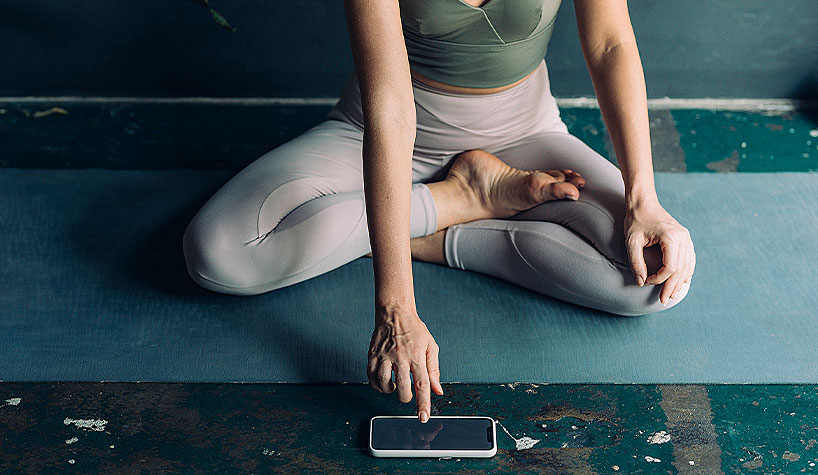As COVID-19 has caused so many changes in the world, it has also affected how people look at health and wellness going forward. WTS International, a provider of management and consulting services to spa, fitness and lifestyle facilities, recently released its annual Trend Report listing its Top 10 Wellness Trends for 2021. Here’s a look:
Air purification
Americans spend the majority of their lives inside. According to the EPA, indoor air quality could be two-five times more polluted than outdoor air and scientists are studying the spread of viruses, including COVID-19, and how to remove them from the air. Consumers are interested in new filter technologies capable of capturing and destroying particles and will expect businesses to include filtration systems in offices, restaurants, fitness centers, schools and all other shared indoor spaces. These air filtration upgrades will be listed as an amenity to entice customers and tenants.
“Who would have guessed a year ago that one of the most sought-after hotel features of 2021 would be fresh air?” said Susan Shanmugham, senior project designer with WTS. “While pre-COVID indoor air quality efforts often focused on decreasing environmental toxins from the building materials and furnishings in the space, the past year has created an increased effort to purify the air of particles emitted by the simple act of breathing. The air quality discussion has expanded from Greenguard and VOCs to be inclusive of MERV and UV-C. While in-duct cleaning solutions such as UV-C light or bipolar ionization are now marketable features, at the end of the day nothing is quite as reassuring as operable windows throughout a hotel or resort to allow fresh air circulation.”
Mental wellness
Mental wellness is finally getting the attention it deserves, as popular apps like Calm and Headspace offer micro-sessions or mini-mental breaks through guided meditations. You’ll now see more devices with built-in alerts to remind you to stop and breathe when it measures that your heart rate is up. Wearables will identify your habits and help track your progress toward reducing stress and being healthier.
New features include vibrations and sound therapy that can cue you to get grounded and help improve your mood. Even in gyms, more holistic classes will be offered that connect the body and mind to strengthen total well-being. Tech giants like Pinterest are now entering the space with resources that include mental wellness “pins” with positive mantras, breathing exercises and meditations for browsers.
“Western culture is finally catching up to what Eastern cultures have known for millennia, that mental health, including mindfulness and intention, is just as important to a person’s overall well-being as are diet and physical exercise,” said Todd Walter, president of WTS. “For a person to be truly ‘well,’ they must achieve balance physically, mentally and emotionally. Hotels and resorts can help promote mental well-being with wellness packages that combine facility assets for full- or multi-day retreats or with in-room evening audio meditation sequences.”
Virtual training
 With fitness centers only opened in a limited capacity—or not at all—many trainers have turned to virtual classes. This has allowed gyms to expand beyond their local clientele to reach a global audience, while allowing customers to connect through a live experience, as if they were in a traditional group class. Many gyms have pivoted and can now compete with home brands such as Peloton and Mirror. Those home gym options have gained popularity too as people have become more comfortable with tech in their fitness routines.
With fitness centers only opened in a limited capacity—or not at all—many trainers have turned to virtual classes. This has allowed gyms to expand beyond their local clientele to reach a global audience, while allowing customers to connect through a live experience, as if they were in a traditional group class. Many gyms have pivoted and can now compete with home brands such as Peloton and Mirror. Those home gym options have gained popularity too as people have become more comfortable with tech in their fitness routines.
“During the pandemic, health-conscious consumers shifted workouts from the gym to home and this preference for home workouts is accelerating the hotel in-room fitness trend,” said Mike Flanagan, the company’s chief growth officer. “Post-pandemic, many travelers will want in-room hotel fitness and virtual options to eliminate worry about being in a communal workout facility during their stay. In addition, the convenience of on-demand programming has solved the challenge of meeting scheduled classes or finding a trainer while traveling. Hotels are keeping pace with this trend by offering in-room fitness experiences.”
Guestrooms are increasingly multi-tasking as fitness areas with tech that incorporates live streaming, mobile apps and even in-room fitness hubs within a wall, personal trainers and Peloton bikes. “Making fitness more accessible beyond offering 24/7 access to a fitness center should be a goal for every property,” he added. “Autonomous solutions where guests can book a private training pod with professionally streamed classes, meditation or even personal training will be enhancements that can be made to provide the best experience for guests.”
Circadian Health
 People are looking beyond the mere number of hours of sleep they get to better understand their quality of rest. Research has shown how circadian rhythms, a person’s internal clock, impact health. Circadian rhythms are influenced by environmental factors, especially light, and devices will flood the market that filter out blue light from screens on tablets, phones and computers, which interfere most with sleep. You’ll see more of these devices in the workplace as growing research supports a link to productivity. Also coming are sleep tracking devices that can dim your lights, drop your room temperature, turn into a sound machine, track your sleep, give you personalized recommendations on winding down, and soon may be able to release a relaxing scent.
People are looking beyond the mere number of hours of sleep they get to better understand their quality of rest. Research has shown how circadian rhythms, a person’s internal clock, impact health. Circadian rhythms are influenced by environmental factors, especially light, and devices will flood the market that filter out blue light from screens on tablets, phones and computers, which interfere most with sleep. You’ll see more of these devices in the workplace as growing research supports a link to productivity. Also coming are sleep tracking devices that can dim your lights, drop your room temperature, turn into a sound machine, track your sleep, give you personalized recommendations on winding down, and soon may be able to release a relaxing scent.
“For years studies have shown that following one’s natural, innate body rhythms leads to a better state of overall health,” said Mary Lynn Mellinger, director of planning and design with WTS. “Coordination, cardiovascular activity, brain function, weight control, immunity strength and digestion can all be optimized by following these ancient cadences set in place during humankind’s evolution. The hospitality industry is working to combat what is seen as our modern lives’ disruption of these natural cadences by providing sleep coaches, circadian lighting, apps to fight jet lag and circadian dietary options. As we look into the future, the manner in which we respond to our circadian rhythms will only become more prominent in our understanding of how it contributes to modern day wellness. Perhaps that afternoon ‘slump’ is really an ancestral nudge to take a nap.”
Lymphatic health
Lymphatic health will be included in more treatments and programs from beauty to bodywork. The lymphatic system extends throughout the body and acts as a drainage network, eliminating waste from your cells that could otherwise lead to health issues. Massage has long included lymphatic drainage to help reduce inflammation and support a healthy immune system, but now look for this to extend to facials and through popular trends like dry brushing, foam rolling and specific exercise programs like trampoline classes and dynamic stretching to promote the elimination of waste.
“Travel- and stay-related fatigue, although not perceived that way, is often related to a sluggish lymphatic movement and can be caused because of dehydration, travel-induced poor postural alignment and lack of sleep,” said Dr. Abhishek Jain, VP, international operations. “While the travel in business/first-class flights, limousine airport transfers and cushioned hotel slippers are certainly helpful, new age health-conscious business and leisure travelers want more to prevent negative impacts on lymphatic health. We anticipate seeing increased demand for Jet Lag Revival IV therapies; pre-, peri- and post-flight stretch and recovery regimens, and pillow menus as the travel and hospitality industry bounces back in a post-COVID era.”
Renewed interest in nature
People have increased their interest in nature in response to more time spent in their homes, and design trends show more people investing in plants to create indoor gardens, also known as “COVID gardens.” Plants help clean the air and provide a sense of companionship. Consumers have shown shifts in behavior with increased interest in biking, hiking and other immersive trips into nature and away from others. Local travel will continue to trend, with car-accessible nature destinations being desirable.
“The great outdoors is the place to be once again,” said Amy Gallogly, WTS’s VP, lifestyle division.“With staycations continuing to trend upward, there is a sudden surge in popularity for those venues that offer a wide variety of outdoor social and recreational opportunities for guests to explore. Wellness retreats, family adventure trips and destinations that combine the elements of nature are attracting vacationers. Leisure destinations are leveraging their local surroundings that offer outdoor day trips to draw in consumers. Attractions like zoos, botanical gardens, beaches, zip lining and water sports are all on vacationers ‘must do’ lists.”
The trending theme is bringing the indoors to the outdoors. “Resorts can enhance their onsite offerings with engagement activities like biking, hiking and outdoor fitness classes,” she added. “Expanding F&B outlets and even retail to outdoor venues will continue to gain momentum in the leisure industry.”
Wellness communities
Real estate design for community spaces will focus less on well-appointed amenities and more on activities that promote wellness, like outdoor lifestyle perks like lagoons, meditation domes, community farms and juice bars.
“Wellness real estate remains the fastest growing sector of the $4.5 trillion annual wellness economy,” said Kim Matheson, SVP. “As reported by the Global Wellness Institute, wellness real estate commands a significant premium worldwide. For this reason, we are seeing in-development hospitality projects significantly expanding holistic wellness offerings. In addition to the expected fitness, spa, and wellness programs, both leased medical programs and in-house partners have become integrated offerings to help round out the wellness spectrum.”
Virtual care
New virtual care apps are emerging constantly, with traditional medical practices even joining the trend. Patients are getting diagnoses and care through virtual connections, and insurance companies are increasing their telehealth reimbursements.
Wearables will expand offerings to include much more than tracking activity levels, food and sleep and you’ll see more goal-setting options that share health data with doctors. Virtual care will focus on preventable medical care to help boost healthy habits, strengthen relationships with care providers and improve patient outcomes. It could also make care more accessible, helping overcome capacity constraints due to the pandemic. New technology is emerging that could allow apps to support various home-testing like 3D body scans. These advancements in the marketplace could help give doctors a better snapshot of health.
“Last year was a year all about adaptation as we quickly had to change behavior, activities and business practices,” said Catherine Warren, VP, training with WTS. “COVID-19 forced all of us to create unchartered alternatives to our traditional communal health and wellness practices. Telemedicine emerged, and we adapted to it rapidly by utilizing video conferencing. Health apps dominated our phone screens as we faithfully tracked our exercise, hydration levels and nutrition and shared our statistics and trends with our doctors, therapists and personal trainers.
She anticipates that hotels will offer virtual fitness classes to the offerings of virtual care, as well as wellness workshops, nutritional coaching including vitamin therapy and meditation programming virtually.
Healthy boosts
With healthy lifestyles a priority for consumers, adaptogens (natural substances with medicinal properties) and CBD (or cannabinol, a compound found in the cannabis plant without intoxicating properties), are still trendy. Functional doctors and therapists have been increasingly prescribing these boosts to help with anxiety, pain, sleep and stress.
“Rising demand for immunity-enhancing formulations has led to overnight burgeoning of ‘healthy boosts’ worldwide,” said Jain. “However, depending on needs and the inclination of a typical guest profile at a hotel property, we anticipate increasing availability of herbal decoctions and teas, vitamin water, ‘golden latte,’ fruit-infused water, fresh juices and organic drink preparations across settings ranging from pool bars to hospitality stations in the arrival lobby, and at various touch points for a typical guest. It is as if immunity is now the ‘journey,’ and no longer a ‘destination.’”
Post-pandemic behavior
Some wellness trends introduced during the pandemic will be here to stay. Businesses will continue to offer work-from-home options, decrease nonessential business travel and enhance corporate wellness opportunities to support employee mental and physical well-being. Consumers will accelerate their interest in immunity-related products and items that limit the spread of viruses. Home trends will include repurposing extra bedrooms and other unused spaces to create dedicated home offices. A simpler, minimalistic lifestyle will prevail, centered on activities like biking, gardening and local travel.
“One of the interesting trends of pandemic behavior is a return to road trips,” said Gary Henkin, WTS CEO. “We’re excited to see how the hospitality sector might make the road trip an even more prevalent phenomenon post-pandemic. Properties, for example, could combine attributes and/or packages, offering road-trippers a fully planned and curated tour of a region. Instead of travelers having to plan each stop, hospitality brands could create packages for trippers with multiple properties across states, adapting the advantage of a multi-city cruise experience and combining it with a post-pandemic love of “cruise control.”
